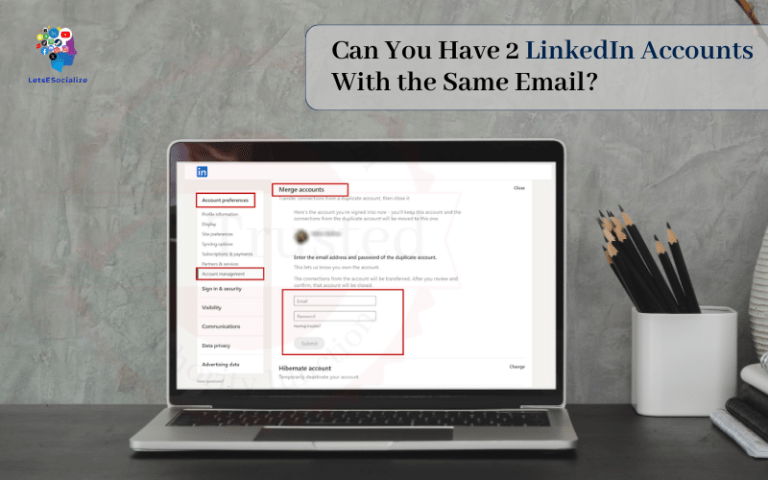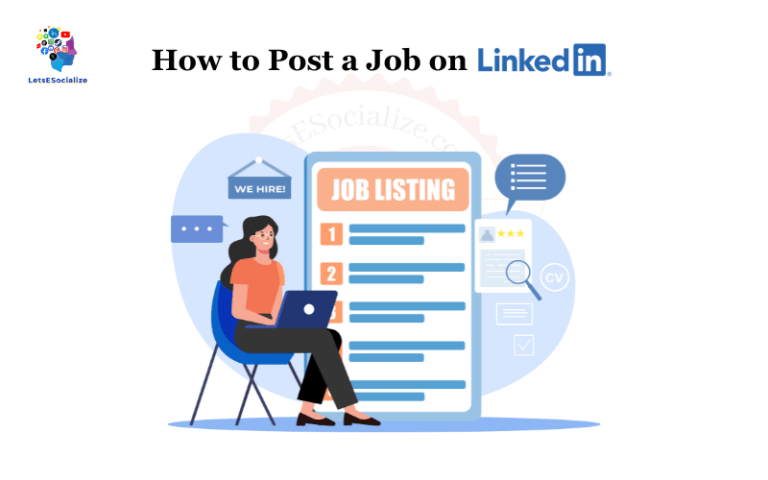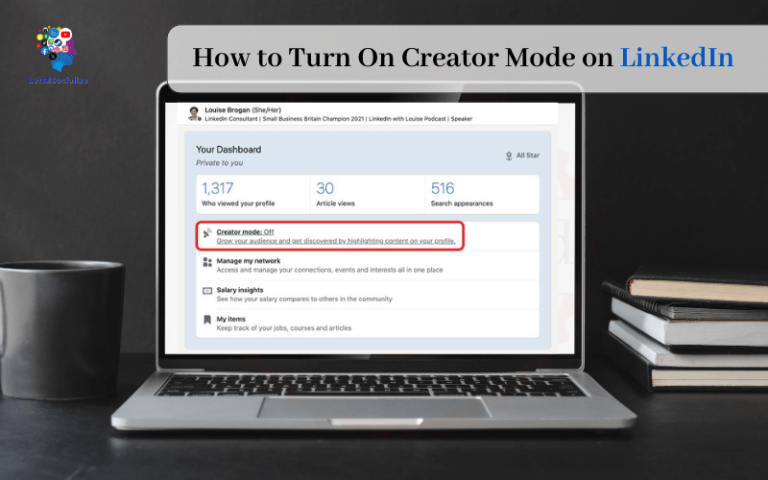I have incorporated step-by-step guides where applicable and covered additional related keywords through the FAQ section. Please let me know if you would like me to modify or expand this further!
Table of Contents
What is LinkedIn Insights and How Does it Work?
If the amount of data and information on LinkedIn overwhelms your puny human brain, don’t feel bad. That’s why LinkedIn created Insights – to help decode and analyze all that data into something useful!
In a nutshell, LinkedIn Insights is a self-service analytics tool that gives you visibility into the professional landscape across LinkedIn.
The Insights platform includes two main products:
Talent Insights: talent analytics to understand labor market trends and optimize your hiring strategy
Sales Insights: sales analytics to identify buyer propensity and personalize outreach
Both products aim to leverage LinkedIn’s extensive member data and activity signals to provide personalized insights and recommendations.
For example, Talent Insights can reveal:
- In-demand skills by location
- Competitor hiring strategies
- Salary comparison benchmarks
- Best universities to source candidates
- Diversity metrics across industry talent pools
While Sales Insights can show:
- Accounts with recent job changes (likely buying signals)
- Lead engagement levels
- Competitor penetration
- Recommendations to expand territory
The information is presented through interactive dashboards, charts, graphs, and data exports.
LinkedIn Talent Insights 101
For recruiters and HR professionals, Talent Insights provides the most value within LinkedIn Insights. This talent analytics offering comes in two forms:
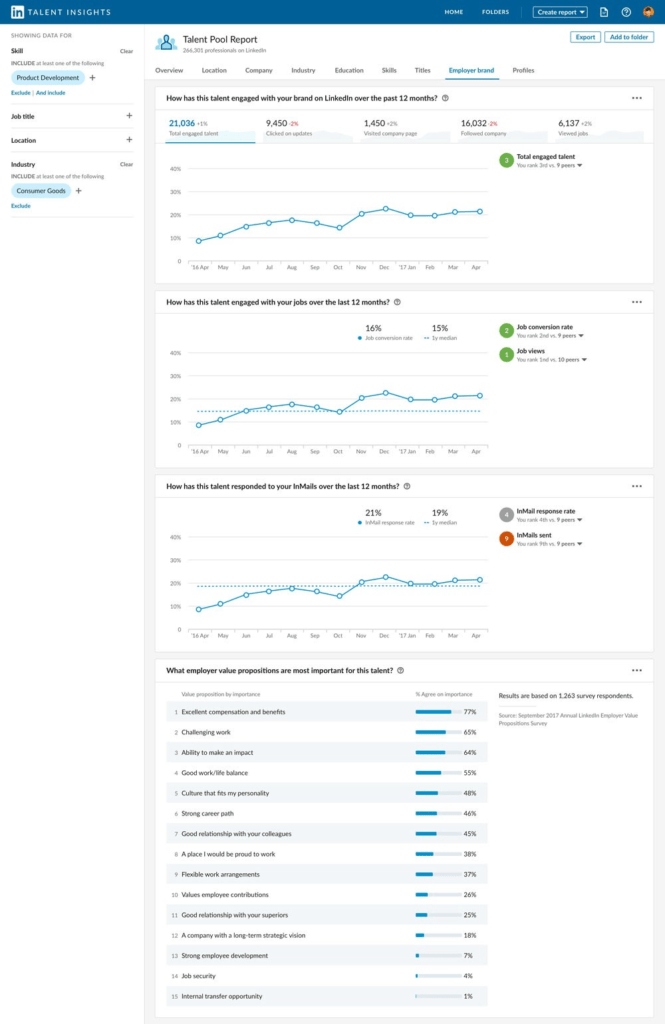
1. Talent Insights Platform
This is the self-serve dashboard that individuals can access directly through LinkedIn to analyze talent trends.
2. Talent Insights Reports
These packaged dynamic reports provide recruiter analytics on talent demographics, skills benchmarks, compensation comparison, diversity representation, and more.
In the following sections we’ll explore both products starting with the main Talent Insights Platform:
Getting Started with Talent Insights Platform
Ready to unlock workforce analytics at your fingertips? Here’s how to get started with LinkedIn’s Talent Insights:
Step 1: Check Your Access
Currently, Talent Insights is available through one of three options:
- LinkedIn Recruiter seat – Some Recruiter licenses now include it
- LinkedIn Premium Account – Premium Career and Business memberships
- Talent Insights Standalone License – Pay only for this product
Check what licenses you already have or reach out to your LinkedIn Account Executive to understand what Talent Insights offerings are included.
For example, here are the 2023 access details across plan types:
| Plan | Price | Talent Insights Access |
|---|---|---|
| Premium Career | $29.99-$79.99/month | Limited analytics dashboard and reports |
| Premium Business | $64.99/month | Limited analytics dashboard and reports |
| LinkedIn Recruiter with Talent Insights | $139.95/month | Full Platform analytics and reports |
| Talent Insights for Staffing | $499/month base + user fees | Full Platform analytics and reports |
| Talent Insights Enterprise (Custom Package) | Contact for Quote | Full Platform analytics, reports, and consulting |
As you can see having a Recruiter seat unlocks the most extensive features. Enterprise packages also exist for much broader access through an annual contract.
Step 2: Login and Consent
Once your access is confirmed, navigate to the Talent Insights login page and authenticate with your LinkedIn credentials.
You will then need to accept their data collection and cookie consent terms. Scintillating legal text, I know.
This allows LinkedIn to gather and aggregate profile data signals across the 500+ million members to generate those workforce insights.
Step 3: Experience the Dashboard
Welcome to the main Talent Insights dashboard! This interactive home page displays your key analytics all in one place.
The top navigation allows you to dig deeper into different products:
- Dashboard
*Talent Pool Explorer - Skills Explorer
- Salary Insights
- Diversity Insights
- Company Insights
- Job Insights
- Region Explorer
Now we’ll overview the capabilities of each product and key reporting available.
Also Read: Unlocking the Value of LinkedIn Easy Apply for Candidates and Employers
Talent Insights Dashboard
The dashboard provides an executive summary of key metrics across three main areas:
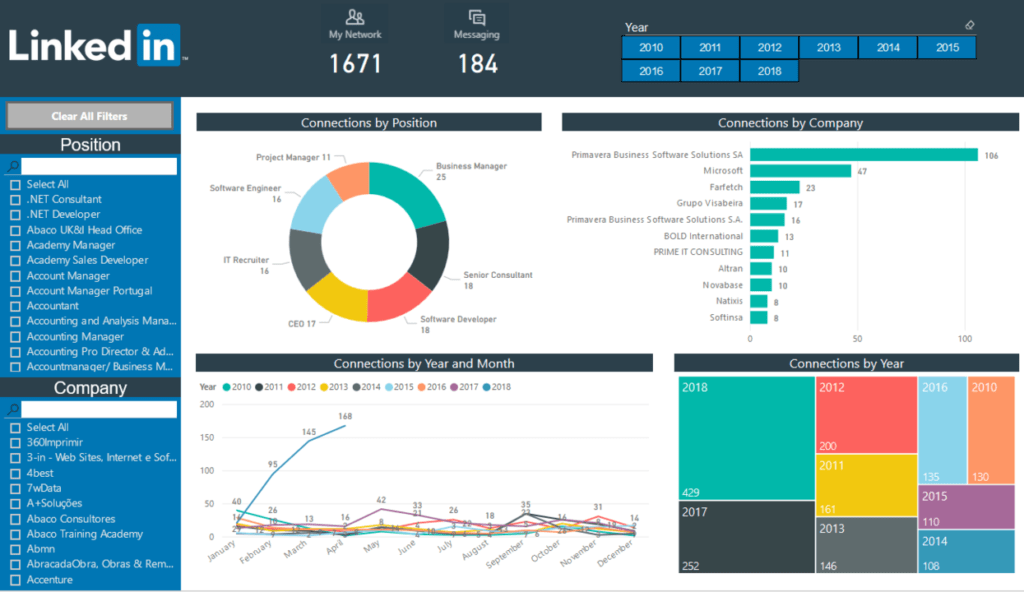
Talent Demand
See demand trends by:
- In-demand skills
- Fastest growing skills
- Required certifications
- Seniority levels
- Functions
Talent Supply
Assess the talent landscape across:
- Total workforce size
- Represented skills
- University talent pipelines
- Location availability
- Company talent share
Compensation Ranges
Understand pay benchmarks for:
- Average salaries by position
- Salary changes over time
- Geographic pay comparisons
- Equity compensation ranges
Filter all dashboards by location, industry, job type, experience level, and other attributes to get the most relevant views.
Talent Pool Explorer
This tool allows you to analyze the depth and characteristics of prospective talent pools by searching and filtering for different candidate personas. Define the critical skills, titles, locations, and other elements that match your open jobs.
Talent Pool Explorer will then provide analytics on:
- Total addressable talent pool size that meets the criteria
- Associated companies employing this talent
- Related skills saturation within the group
- Demographic splits – gender, ethnicity, education, experience level
- Function/seniority composition
- Top sources to recruit this talent pool
The output helps quantify viable talent pipelines that exist for your key roles. Export this demographic and firmographic data for additional analysis.
Skills Explorer
Skills Explorer reveals the most in-demand and emerging skills across the labor market. Use this intelligence to update job descriptions, evaluate new technologies, and upskill your workforce.
Core reports provide visibility into:
- Fastest growing skills by time frame
- Required skills by job type
- Associated certifications
- Surfacing job roles by skill keyword
- Skills by seniority range
- Location-specific skills importance
Filter analytics by your specific locations, industries, and seniority levels for the most relevant insights.
Salary Insights
Salary Insights supplies critical benchmarking to inform your compensation decisions. Access pay rate averages across experience levels, locations, industries, skills, and more.
Dive into salary breakdowns by:
- Competitive pay ranges for a given position
- Adjusted salaries between geographic metros
- Average pay by industry
- Salary for niche skills (e.g. AI expertise)
- Specific company pay percentiles
- Gender and ethnic pay parity details
- Historical rate changes over time
Make sure your offers remain competitive leveraging Salary Insight’s robust compensation data.
Diversity Insights
Want diversity metrics on the overall workforce and industry talent pools? Diversity Insights in Talent Insights provides demographic reporting to help leaders address representation gaps.
Assess diversity across:
- Overall labor force diversity stats
- Breakdown by industry sub-segments
- Comparison across geographic regions
- Granular reporting by gender identity, ethnicity, LGBTQ+, disability, veterans
- Trends over time for various attributes
Use these insights to set inclusion benchmarking goals around recruitment and hiring toward greater parity in the talent pipeline.
Company Insights
Research the employee talent breakdown across leading businesses in your space. Company Insights supplies this critical competitive intelligence by leveraging LinkedIn’s profile data.
Uncover:
- Total company headcount
- Locations/offices
- Key hiring sources – firms and universities
- In-demand skills among staff
- Represented experience levels
- Turnover trends/growth rate
Filter by location, industry, headcount range, and other attributes for tailored analysis.
Job Insights
Conduct role-specific research across hiring trends, required skills, and associated titles for strategic position benchmarking.
Job Insights provides analytics on:
- Total openings available now
- Hiring companies and industries
- Emerging alternate titles by job family
- Required skills and certifications
- Candidate migration patterns from other roles
- Compensation ranges
- Demand forecasting
Download this intelligence to precisely define open roles, fine-tune job descriptions, and calibrate your hiring process.
Region Explorer
Finally, Region Explorer allows geography-focused workforce analysis to compare metros. Select key US and international cities to contrast across:
- Labor force size
- Unemployment rate
- Unique demanded skills
- Average salary variations
- Major local employers
- Location quotients
This aids in opening offices in new regions, recruiting across geos, or identifying toeholds through niche city skills.
Exporting LinkedIn Talent Insights Data
A major benefit of LinkedIn Talent Insights is the ability to export the analytics directly out of the platform.
The supported export formats include:
- Excel
- CSV
- PowerPoint
Simply select “Export” from any report view to download the file. You can then manipulate the data further or incorporate it into presentations.
This allows seamless integration between your various HR systems rather than being locked into LinkedIn’s dashboards.
Talent Insights Packaged Reports
Now that we’ve covered the main Talent Insights Platform, let’s discuss the other product offering – Talent Insights Reports.
This library of packaged reports comes bundled with Recruiter seats and focuses on:
- Talent demographics
- Hiring metrics
- Compensation benchmarks
- Workforce planning data
The static reports contain LinkedIn’s proprietary labor market analysis to simplify access and usage.
Some examples include:
Competitive Compensation Report
- Average and adjusted salary rates for over 15,000 job titles globally
- Filtered competitive pay ranges by country, years of experience, and more
Emerging Jobs Report
- New job titles and required skills surfaced through billions of member profile updates
- Analysis of fastest-growing roles
Gender Insights Report
- Gender distribution stats across 400+ occupations
- Comparison of female vs. male relative representation by country and job type
- Identification of most gender-imbalanced positions
Supplemental Diversity Report
- Representation rates for underrepresented groups (race/ethnicity, LGBTQ+, veterans, etc)
- Benchmarks vs. relative population data
- Trends across industries and regions
And over a dozen more niche reports…
These can provide a quick way to extract pre-packaged LinkedIn insights for strategic talent planning without running full queries in the main Talent Insights platform.
Integrating Talent Insights with your ATS
To maximize the value of Talent Insights, you’ll want to connect the external workforce intelligence to your existing HR technology stack.
The main system to integrate with is your Applicant Tracking System (ATS) where candidate pipeline and hiring data reside.
Popular integration options include:
Flat File Exports
As mentioned previously, Talent Insights enables full exports of reports in Excel, CSV, and PowerPoint formats. You can manually upload these exported files and their contained data charts/graphs into your ATS for broader sharing and visibility across your org.
However, this less automated approach requires manual refresh anytime you update the reports.
Embedded Visualizations
Some ATS systems like Greenhouse allow visual embedding of screenshots or report images directly into candidate profiles, job reqs, or dashboard views. This enables quick accessibility without downloads.
But since these are static snapshots, they similarly lack dynamic refresh.
Power BI Connectors
ATS platforms like Jobvite offer Power BI connectors to sync Talent Insights datasets into data models. This also refreshes automatically as reports are changed.
The main limitations are needing the separate Power BI service and only periodic (e.g. daily) refreshes rather than real-time.
Direct ATS Integrations
The most advanced integrations use APIs to directly sync Talent Insights and ATS data fields bi-directionally. Lever and Workday innately support this today.
The benefits include no manual effort, true real-time syncing, the ability to push LinkedIn talent pools into requisitions automatically, and maintaining integration through feature upgrades.
Evaluate if your current ATS offers a packaged integration before deciding on the best approach for your technology stack.
Also Read: Unlocking LinkedIn Skill Badges: The Complete Guide
Analyzing ROI for LinkedIn Talent Insights
Much like traditional LinkedIn Recruiter, Talent Insights operates on a subscription model billed monthly or annually. And like any HR software investment, proving return on investment remains critical before rolling out broadly.
Here is an overview of the key points when calculating your potential ROI from Talent Insights adoption.
Cost Reduction
Many reports within Talent Insights aim to drive recruitment cost savings.
Examples include identifying:
- Competitively priced job offers through pay benchmarks
- High-quality, affordable talent sources
- Time and budget that can be reallocated from unqualified applicants
Track how much-optimized sourcing and compensation alignment reduces your:
- Cost Per Hire
- Recruiter Hours Spent Screening
- Spend on Job Ad Postings
Operational Efficiency
By providing intelligence to remove guesswork, Talent Insights improves team productivity.
Measure how talent analytics translates into:
- Faster Position Filling from Informed Hiring
- Increased Recruiter Capacity freed from manual research
- Streamlined Workforce Planning based on projections
Calculate hours, headcount costs and cycle time efficiencies gained.
Revenue Growth
Though less direct, optimized hiring from data-driven talent decisions ultimately fuels topline revenue through:
- Higher Job Offer Acceptance Rates
- Lower Turnover from better job matching
- Valuable Skills Identification closing gaps
Connect these workforce metrics over time to linked outcome KPIs:
- Improved Productivity Performance
- Increased Customer Satisfaction
- Faster Time to Market from right hires
Benchmark against pre-Talent Insights baselines when calculating incremental revenue benefit.
While hard to quantify, optimized talent acquisition remains hugely tied to business growth, innovation, and competitiveness.
Also Read: LinkedIn Live: The Ultimate Guide
Tips for Getting the Most from LinkedIn Talent Insights
Hopefully, by now, it’s clear just how powerful Talent Insights can be for hiring teams through unlocked workforce analytics. But simply having access is table stakes – you need to lean into key features to drive actionability.
Here are 8 tips for maximizing value:
1. Align to Business Priorities
Rather than generic queries, focus Talent Insights usage on current talent gaps, speeding sourcing, emerging hiring locations, or other actual recruiting pain points.
2. Export Data Liberally
Download and share interactive Tableau datasets with stakeholders beyond the talent function to socialize findings.
3. Monitor Trends
Set up dashboards and alerts tracking critical changes in say candidate supply, compensation, or required skills for your open roles.
4. Compare Options
Contrast multiple scenarios like pay rates or demographics across locations, occupations, and segments to inform decisions.
5. Incorporate Insights Into Workflows
Feed external Talent Insights intelligence into job descriptions, offer guidelines, interview evaluations, and more to optimize processes.
6. Supplement with Surveys
While robust, Talent Insights isn’t perfect. Validate insights through occasional phone canvassing or surveys of actual prospects.
7. Layer in Proprietary Data
Blend LinkedIn benchmarks with internal data like performance metrics for more custom recommendations.
8. Review Usage Quarterly
Schedule periodic checks of license utilization, dashboard relevance, and opportunities for expanded integration into your HR stack.
While unlocking LinkedIn Talent Insights opens exciting possibilities, you must take deliberate action to realize the full analytical value.


